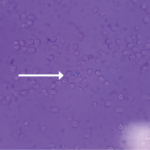In her discussion, Dr. Tedeschi described the entry criteria, absolute exclusion criteria and sufficient criteria for the CPPD disease classification criteria framework. Importantly, the entry criterion requires a patient to have had at least one episode of joint pain, swelling or tenderness, and the absolute exclusion criteria are if all symptoms are more likely explained by an alternative diagnosis, such as rheumatoid arthritis, gout, osteoarthritis, etc.
Dr. Tedeschi noted that it’s important to evaluate patients for related metabolic disease associated with CPPD, such as hereditary hemochromatosis, primary hyperparathyroidism, hypomagnesemia or hypophosphatasia.
To conclude her presentation, Dr. Tedeschi described the fourth phase of the process, which involved validation of the criteria using a recruited cohort of patients and entailed calculations of sensitivity and specificity.
Item Weighting
The session’s second speaker was Abhishek Abhishek, MBBS, MD, FRCP, PhD, professor of rheumatology, The University of Nottingham, U.K., who talked about item weighting in greater detail.
He noted that the combined expert committee members were presented with paired patient scenarios describing such features as sites of typical inflammatory arthritis and number of peripheral joints with imaging evidence of CPPD. The members were then asked to vote on which patient in the pair was more likely to have CPPD disease. A facilitator then encouraged discussion among committee members until a consensus was reached on each pair of patients.
The members identified two criteria, crowned dens syndrome and synovial fluid analysis demonstrating CPP crystals in a joint with swelling, tenderness or pain, as sufficient criteria for classification of CPPD disease.
Dr. Abhishek noted that calculations were made to identify a threshold score from the classification criteria that could be used to optimize sensitivity and specificity. By looking at the derivation cohort of more than 400 patients, with 190 definite cases of CPPD disease, 148 mimickers and 80 uncertain cases, a score of greater than or equal to 57 yielded a specificity of 87.9% and a sensitivity of 92.2%. This threshold score of 57 also performed well in the validation cohort.
Dr. Abhishek concluded by commenting on behalf of Hyon Choi, MD, DrPH, professor of medicine, Harvard Medical School, General Hospital, Boston. He noted that imaging domains account for nearly half of the weighting in the classification criteria and that sensitivity is higher for ultrasound, CT imaging and DECT studies than for conventional radiography.
Additionally, he pointed out that it can be difficult to distinguish between CPPD disease and basic calcium pyrophosphate deposition on imaging, but the imaging definitions from the study by Dr. Tedeschi and colleagues may help with this issue.2

